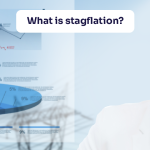Investors in the stock market may often come across the terms "upper circuit" and "lower circuit." But what do these terms actually mean? Understanding these concepts is important for anyone looking to buy stocks online or engage in share trading. Both upper and lower circuits play a significant role in maintaining stability and regulating the pace at which stock prices move. In this blog, we will explore their meaning and significance.
For those aiming to get clarity on upper circuit meaning, it refers to the maximum price limit a stock can reach during a single trading session. This limit is set by regulatory authorities, like the Securities and Exchange Board of India, to prevent extreme volatility in the market. When the price of a stock climbs and hits the upper circuit, trading for that stock is automatically halted. This halt ensures that the price does not surge uncontrollably within the same session.
In simpler terms, an upper circuit is a regulatory mechanism that acts as a ceiling on how much a stock price can increase in one day. When a stock hits its upper circuit, it means there is a strong buying demand, and it protects traders from sudden spikes in prices.
On the flip side, lower circuit refers to the lowest price a stock is allowed to fall to during a trading session. Similar to the upper circuit, this limit is also set by regulatory bodies to curb excessive volatility. When a stock's price drops to its lower circuit, trading is again halted to avoid further decline in the stock's price.
Lower circuit’s meaning is simple. Essentially, the lower circuit is a price floor. When a stock hits this limit, it indicates a sharp selling pressure, and the halt helps prevent a market crash or excessive loss in the stock’s value.
Both upper and lower circuits are essential to maintain the orderly functioning of the share market. By placing these limits, market regulators ensure that prices do not fluctuate wildly in a single day, preventing market manipulation and panic selling or buying.
These circuits also provide a cooling-off period for investors. When a stock hits either circuit, it allows traders to reassess their strategies and decisions rather than being forced into impulsive actions based on price swings.
If you're looking to buy stocks online and a particular stock hits its upper circuit, you may find that you cannot purchase that stock for the rest of the trading day. This is because once a stock hits its upper circuit, no further buy orders can be executed. The same applies to selling when a stock reaches its lower circuit.
For retail investors, these circuits might feel like a roadblock when trying to execute trades. However, it's important to understand that these limits exist to protect market integrity and your investments from abrupt market shocks.
Yes, traders can benefit, but it requires careful timing and understanding. When a stock approaches its upper circuit, it can signal strong market demand, which might indicate potential profits if you're holding that stock. However, this also means it becomes difficult to buy more of the stock if you want to increase your holdings.
On the other hand, when a stock nears its lower circuit, it may be a warning of declining interest or bad news. While some traders may see this as an opportunity to buy the stock at a lesser price, there's a risk that the stock could continue to decline when trading resumes.
If you’re actively involved in share trading online, it’s essential to keep an eye on market movements, particularly for stocks nearing their circuit limits.
While the circuit limits can sometimes prevent you from buying or selling immediately, they exist for your protection and the overall stability of the market.
Understanding what is upper circuit and lower circuit in the share market is crucial for anyone participating in stock trading. These regulatory mechanisms serve to prevent sudden price swings, ensuring a stable and orderly market. If you’re an experienced trader or starting to buy stocks online, being aware of these limits can help you make decisions and protect your investments.

Midcaps: Sweet Spot or Danger Zone? | What HSBC MF’s Cheenu Gupta Thinks | Ventura Spotlight
3 min Read Dec 17, 2025
Understanding Option Pin risk near expiry
3 min Read Dec 12, 2025
EPS in the Stock Market
3 min Read Dec 12, 2025
What is stagflation?
3 min Read Dec 10, 2025
Did Andhra Pradesh Just Trigger India’s Next Spirits Boom?
3 min Read Dec 10, 2025